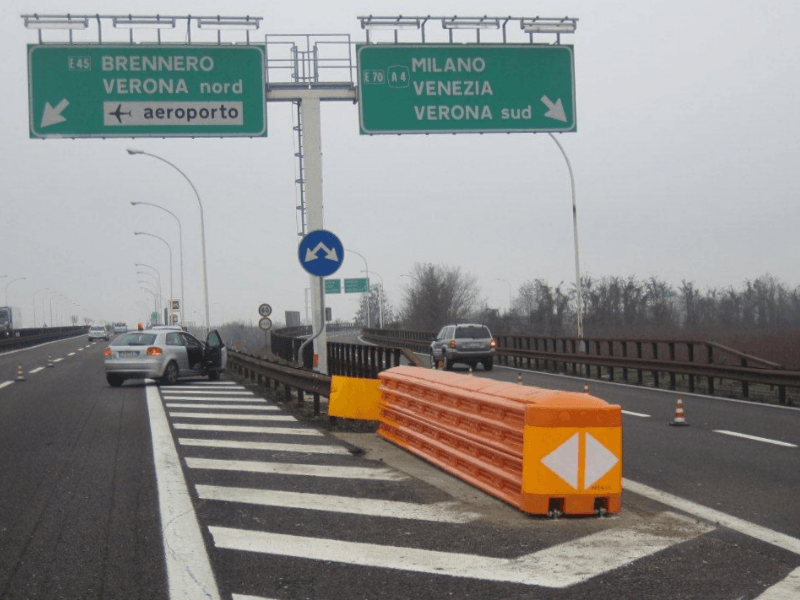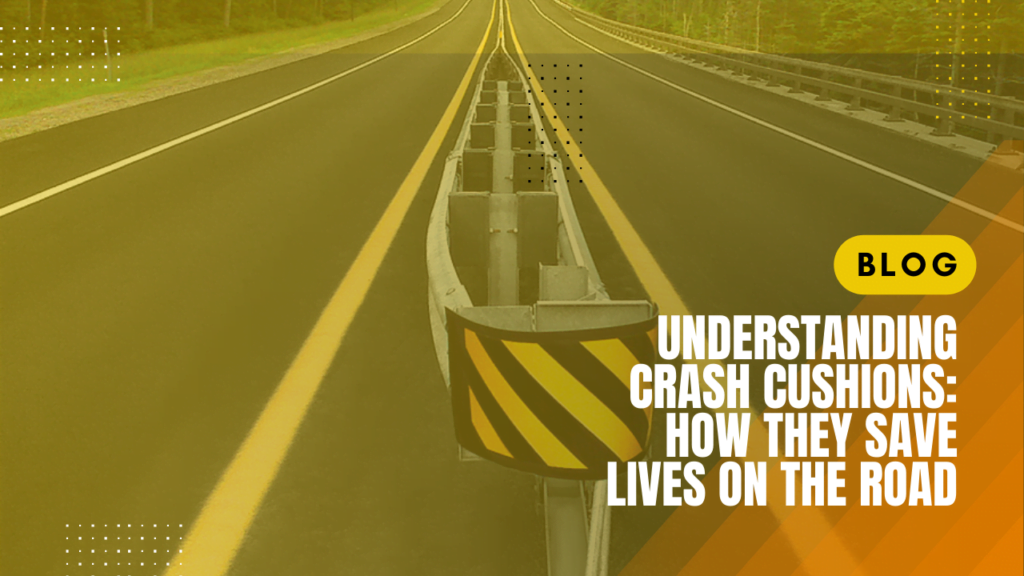In today’s world, road safety is a critical concern, emphasizing the need for innovative solutions like the Crash Cushions system. These vital roadside safety devices absorb impact and reduce collision severity, protecting motorists and pedestrians alike. This article explores the definition, types, functionality, and significance of crash cushions in enhancing highway safety and saving lives.

What is a Crash Cushion and How Does It Work?
Definition and Purpose of Crash Cushions
A crash cushion is a safety device designed to absorb impact energy during collisions, reducing injury risks and minimizing damage to vehicles and roadside infrastructure. Typically placed at the ends of barriers and guardrails, crash cushions mitigate collision energy, preventing severe accidents and saving lives.
How Crash Cushions Work to Absorb Impact
Crash cushions use crushable materials and advanced designs to deform upon impact, converting kinetic energy into heat and sound. This process slows vehicles, redirects them safely, and prevents them from breaching barriers, enhancing overall road safety.
The Role of Kinetic Energy in Car Crashes
Kinetic energy increases with vehicle speed and mass, making high-speed collisions particularly dangerous. Crash cushions effectively absorb this energy, reducing the impact’s severity and protecting vehicle occupants and infrastructure.
What Are the Different Types of Crash Cushions?
Overview of Various Crash Cushion Types
Crash cushions come in different types, including water-filled attenuators, truck-mounted attenuators (TMAs), and energy-absorbing systems. Each type is tailored for specific environments, such as work zones, freeway exits, and gore points, ensuring versatile protection across diverse roadway scenarios.
Truck-Mounted Attenuators vs. Roadside Barriers
Truck-mounted attenuators are mobile safety solutions, ideal for work zones, while roadside barriers provide permanent protection in high-risk areas. Both are essential for ensuring safety, depending on the application and environment.
Water-Filled Crash Cushions: Benefits and Drawbacks
Water-filled crash cushions are cost-effective and easy to transport, making them ideal for temporary use. However, they require regular maintenance and are susceptible to leakage, making them less suitable for long-term installations.
How Do Crash Cushions Save Lives on Highways?
The Impact of Crash Cushions on Highway Safety
Crash cushions reduce collision severity and protect both motorists and roadside workers. Strategically placed in high-risk areas, these devices are vital for preventing fatal accidents and ensuring safer highways.
Statistical Evidence of Crash Cushions Saving Lives
Studies show that crash cushions significantly reduce fatality rates in collision-prone areas, with some systems decreasing impact severity by over 50%. These statistics highlight the critical role of crash cushions in road safety.
Case Studies of Successful Crash Cushion Deployments
Real-world examples demonstrate the effectiveness of crash cushions in reducing accidents. For instance, installing crash cushions at a busy intersection led to a 40% decrease in severe collisions, showcasing their life-saving potential.
What Happens When Crash Cushions Get Hit?
Understanding the Mechanics of Impact on Crash Cushions
Upon impact, crash cushions deform to absorb energy, reducing the vehicle’s speed and protecting occupants. This process prevents severe damage to both the vehicle and roadside structures.
Maintenance and Replacement of Damaged Crash Cushions
After a collision, damaged crash cushions must be inspected and repaired promptly to maintain their effectiveness. Regular maintenance ensures these safety devices remain reliable and ready for future use.




